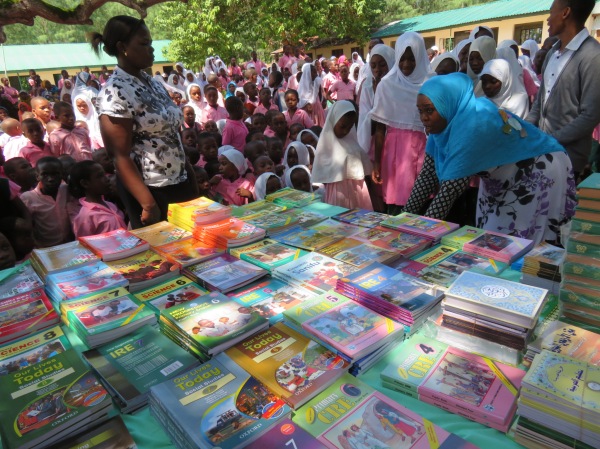Fiona Nunan is a Senior Lecturer in Environment and Development and the Director of the International Development Department. Her interests and experience focus on natural resource governance and management in developing country settings, particularly within inland fisheries and coastal locations in East and Southern Africa, and on exploring the links between poverty and the environment.
- The multiple ways people benefit for natural resources mean there are multiple stakeholders involved in natural resource governance
- ESPA project CESEA is looking to scale up and replicate the success of Mikoko Pamoja, the world’s first community led mangrove conservation programme
- Interactions between “actors” tends to be occasional and dependent on specific projects. There is little sharing of data, and sucess or otherwise is often dependent on personalities rather than organisations.
- Overall, the landscape of multi-level governance is not well-coordinated or integrated, meaning that there may be an overlap of activities, missed opportunities and conflicting objectives and activities.
- Respect between stakeholders and an overarching national framework is needed to ensure coordination, cooperation and information sharing between government, NGOs and other stakeholders.
People benefit in multiple ways from natural resources and these multiple uses mean that there may be many actors involved in governance. A mangrove forest provides a good example of this, with local people benefiting from timber, fuelwood, fish, crabs and coastal protection, meaning that governance involves actors from forestry, fisheries, and coastal zone management, including community-based organisations, NGOs and local and national governments. In addition, carbon sequestration by mangrove forests brings global benefits and actors involved in climate change mitigation enter the mangrove governance mix.
The multiple benefits that can be realised from carbon sequestration is seen in the case of Mikoko Pamoja – the first community-type project of its kind to receive financial compensation for conservation of mangrove forests from carbon offsetting. This PES scheme, based in Gazi Bay, Kenya, has raised awareness of the benefits from mangrove conservation as well as generated income for local communities.

Diani workshop group
An ESPA-funded project ‘Coastal Ecosystem Services in East Africa’ (CESEA) is investigating how schemes such as Mikoko Pamoja could be replicated elsewhere and scaled-up to include other coastal ecosystems and ecosystem services. Part of the research involves investigation of the governance system for PES schemes. Two workshops were held in Kenya on the 19th and 21st July, 2016, one with stakeholders at the local and County level and the other with national-level stakeholders, to discuss how governance actors interact with each other within and between administrative levels as part of that investigation.
From these workshops, it was found that interaction tends to be occasional, dependent on specific activities and is more likely to happen through projects rather than on a regular basis. There is little sharing of data and information between departments within an organisation let alone between organisations. Where there is interaction, it tends to depend on the personality of individuals and the personal relationships between people of different organisations. Government officers may fear going beyond their remit when working with other organisations and entrenched norms on working practices may also limit cooperation between organisations. The landscape of multi-level governance is not well-coordinated or integrated, meaning that there may be overlap of activities, missed opportunities and conflicting objectives and activities.

Nairobi workshop group
What was clear from the workshops is that there are several policies in place encouraging a more coordinated, integrated approach to natural resource management but there isn’t the guidance or mechanisms in place to enable that to happen. What struck me as well was the emphasis on the need for respect between stakeholders which challenges more hierarchical views of multi-level governance. Suggestions from the workshops include the need for an overarching framework at national level requiring coordination, cooperation and information sharing between government sectors and providing guidance on how that could happen. It was hoped at the national workshop that the recently approved National Mangrove Management Plan will encourage greater working between government departments at national, County and local levels.

Gazi book handover
I was very fortunate to be in Gazi Bay when Mikoko Pamoja was handing over books purchased from the sale of carbon credits to Gazi Primary School. This is the third time Mikoko Pamoja has shared benefits received from the sale of carbon credits. The handover ceremony was a very well organised occasion, with great entertainment and speeches, including by the Minister of Education for Kwale County and James Kairo of the Kenya Marine and Fisheries Research Institute, who led the formation of Mikoko Pamoja. There was clearly a lot of awareness and understanding of and commitment to both Mikoko Pamoja and the objectives of mangrove forest conservation. Credit is due to the committee members of Mikoko Pamoja, the coordinator of Mikoko Pamoja, Salim Abdallah Mwarima, Kenya Forest Service, who were out in force to support the occasion, and the teachers of Gazi Primary School.
